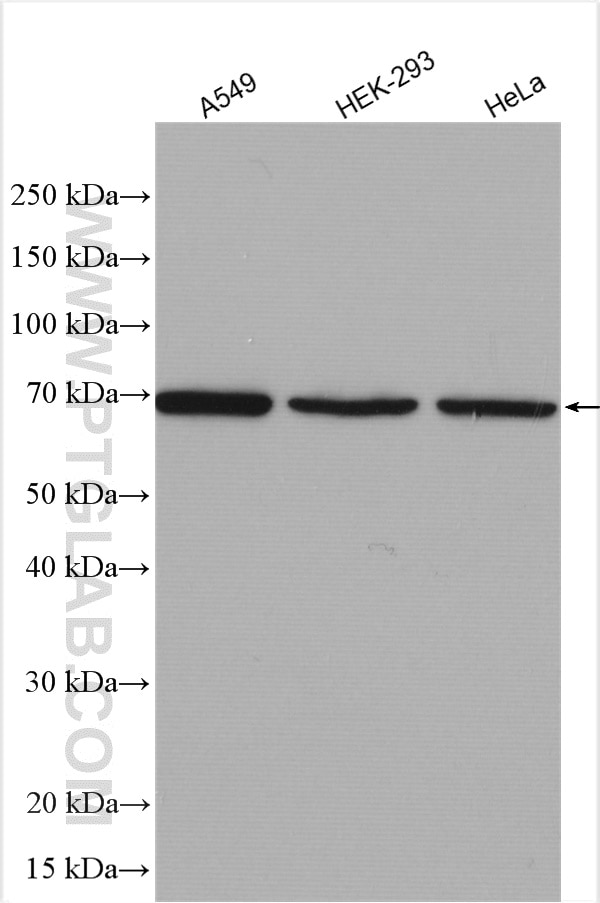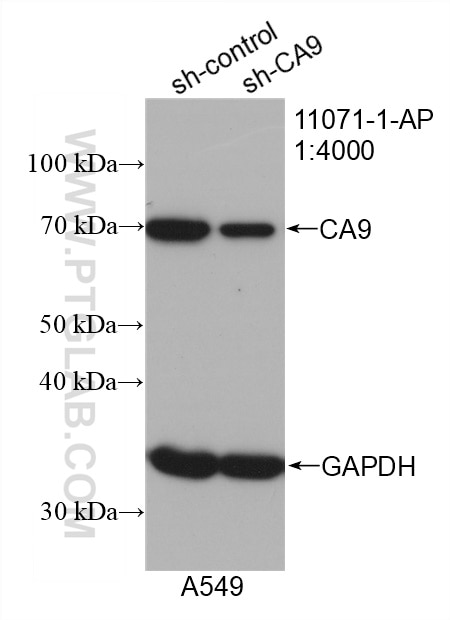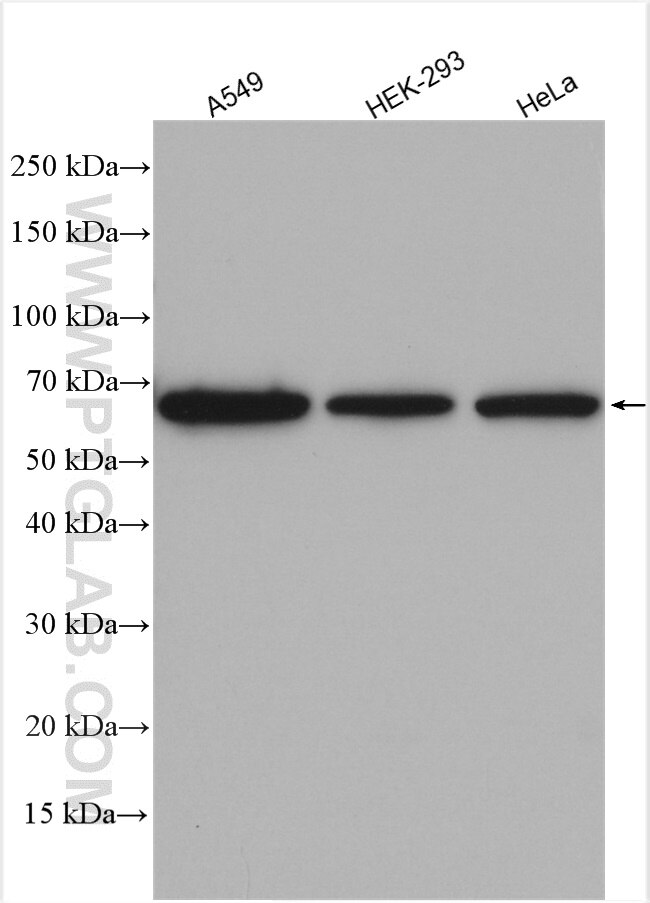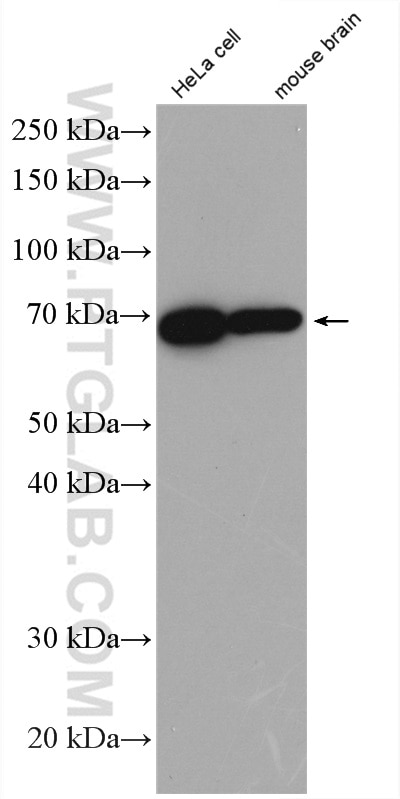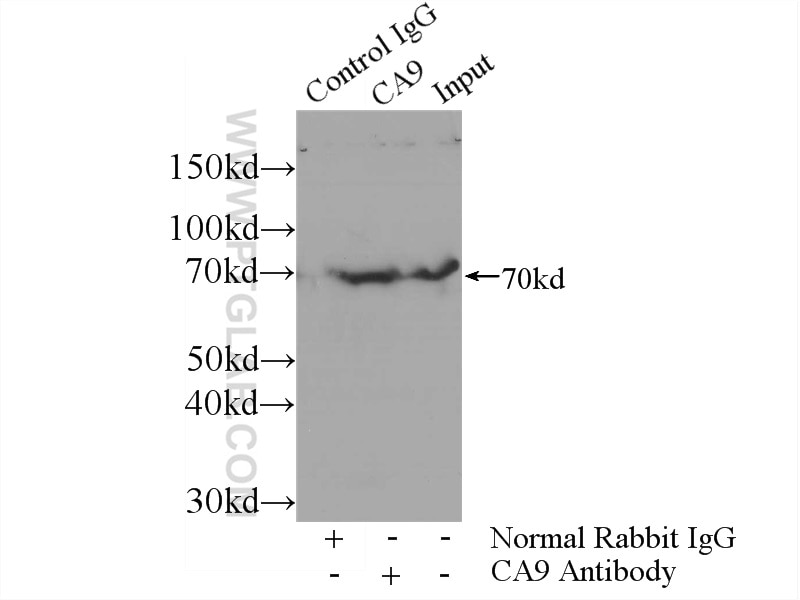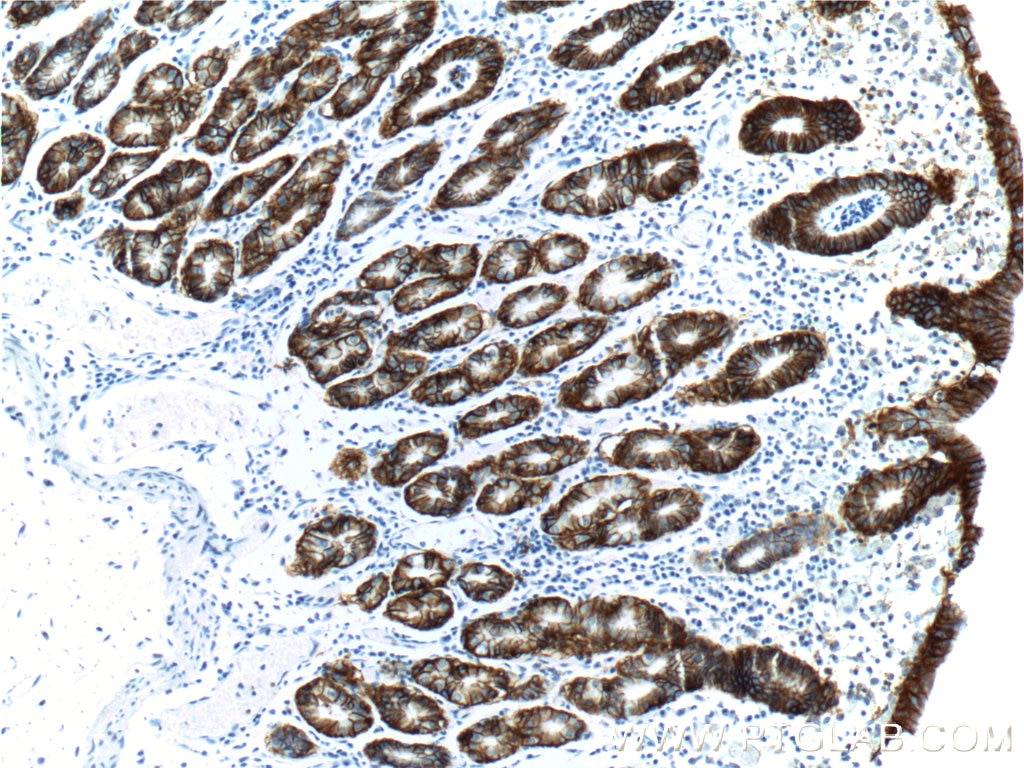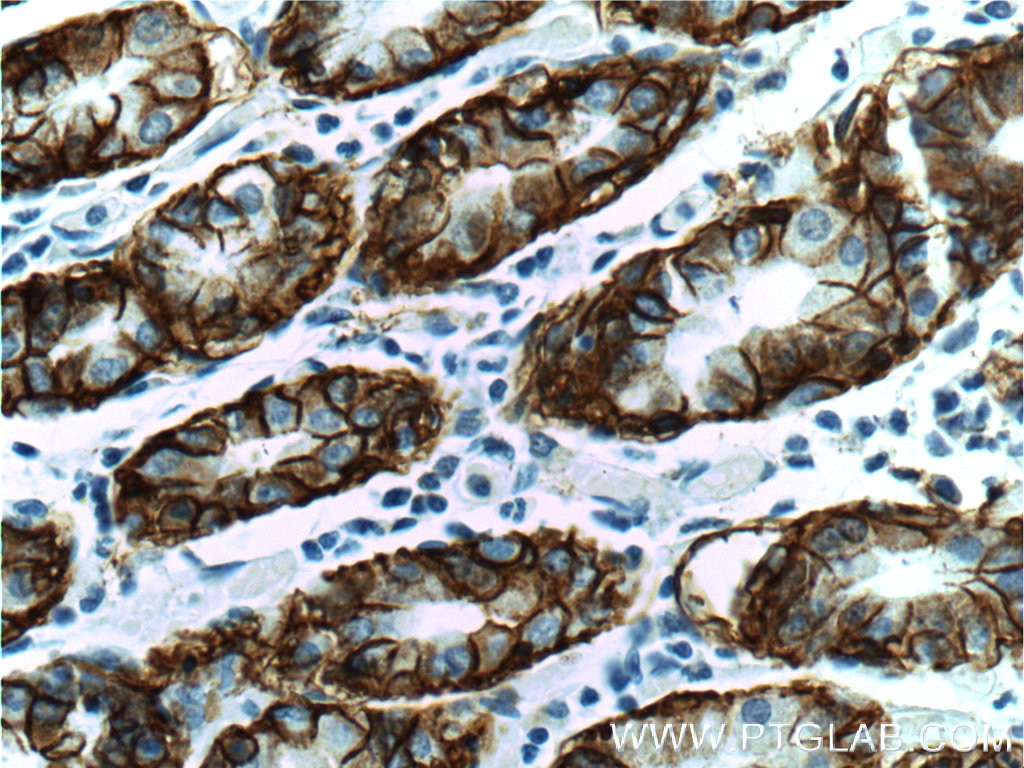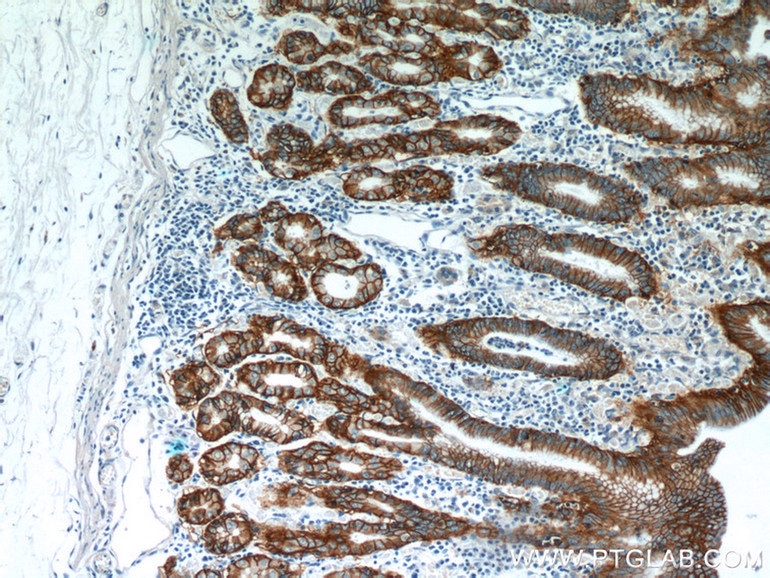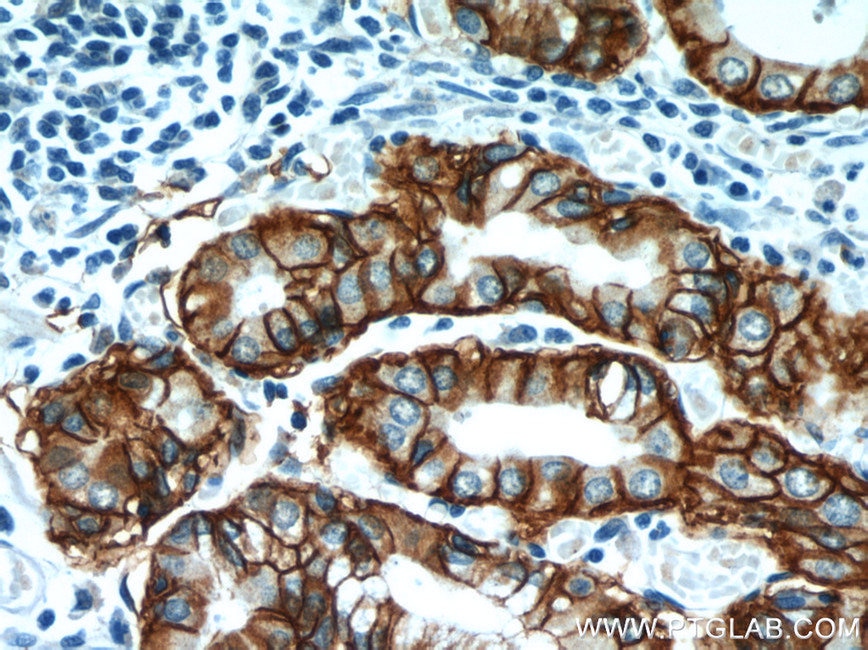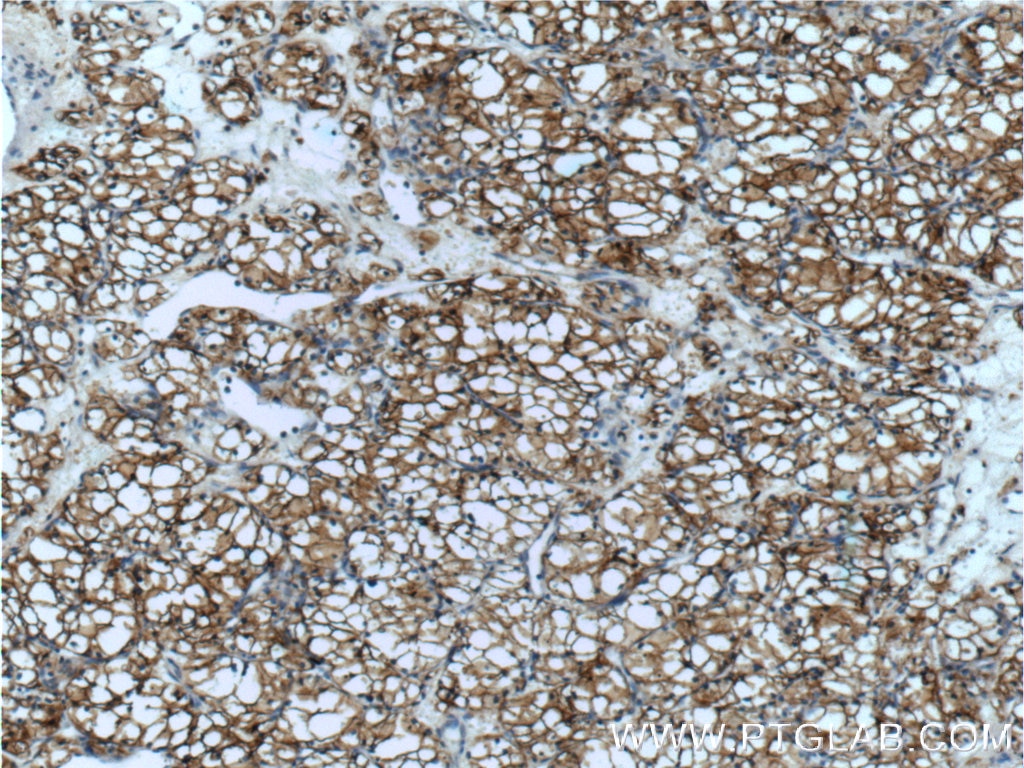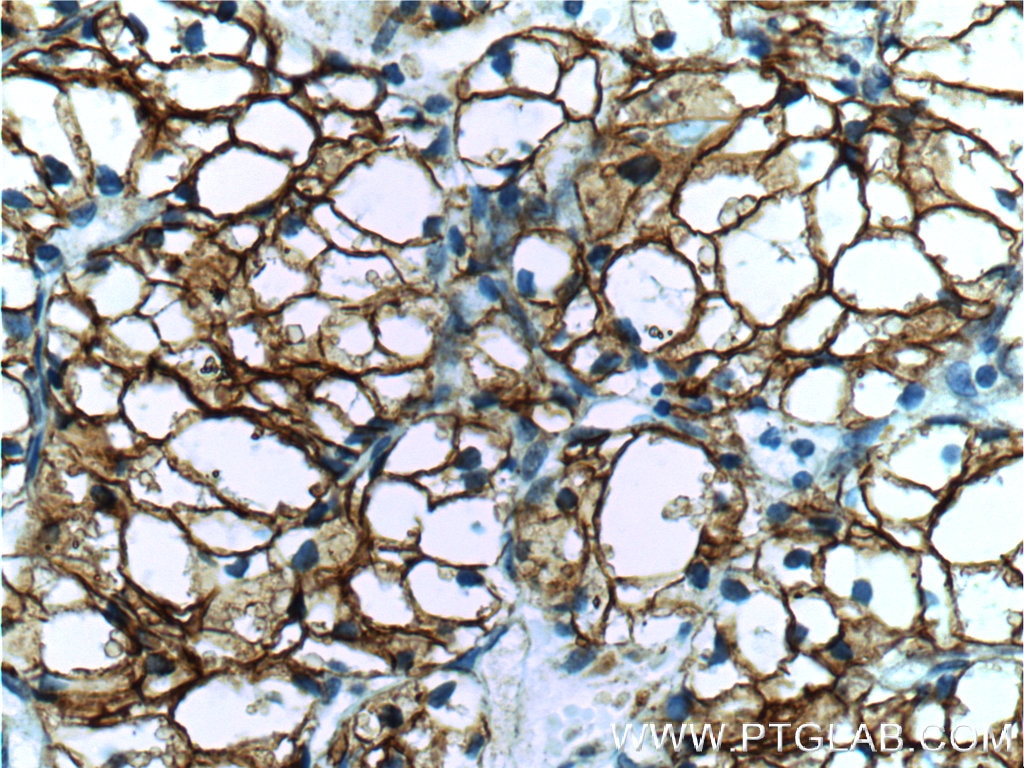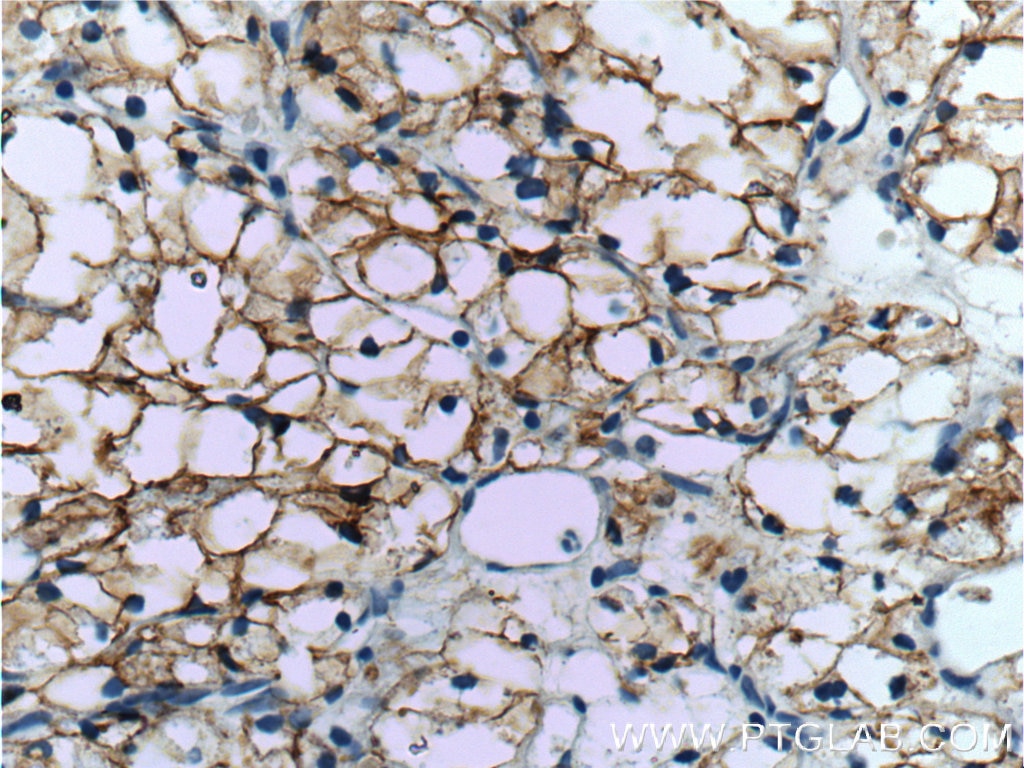- Phare
- Validé par KD/KO
Anticorps Polyclonal de lapin anti-CA9
CA9 Polyclonal Antibody for WB, IP, IHC, ELISA
Hôte / Isotype
Lapin / IgG
Réactivité testée
Humain, rat, souris
Applications
WB, IP, IF, IHC, ELISA
Conjugaison
Non conjugué
N° de cat : 11071-1-AP
Synonymes
Galerie de données de validation
Applications testées
| Résultats positifs en WB | cellules A549, cellules HEK-293, cellules HeLa, tissu cérébral de souris |
| Résultats positifs en IP | tissu hépatique de souris |
| Résultats positifs en IHC | tissu d'estomac humain, tissu de carcinome à cellules rénales humain il est suggéré de démasquer l'antigène avec un tampon de TE buffer pH 9.0; (*) À défaut, 'le démasquage de l'antigène peut être 'effectué avec un tampon citrate pH 6,0. |
Dilution recommandée
| Application | Dilution |
|---|---|
| Western Blot (WB) | WB : 1:1000-1:4000 |
| Immunoprécipitation (IP) | IP : 0.5-4.0 ug for 1.0-3.0 mg of total protein lysate |
| Immunohistochimie (IHC) | IHC : 1:50-1:500 |
| It is recommended that this reagent should be titrated in each testing system to obtain optimal results. | |
| Sample-dependent, check data in validation data gallery | |
Applications publiées
| KD/KO | See 1 publications below |
| WB | See 19 publications below |
| IHC | See 23 publications below |
| IF | See 6 publications below |
Informations sur le produit
11071-1-AP cible CA9 dans les applications de WB, IP, IF, IHC, ELISA et montre une réactivité avec des échantillons Humain, rat, souris
| Réactivité | Humain, rat, souris |
| Réactivité citée | Humain, souris |
| Hôte / Isotype | Lapin / IgG |
| Clonalité | Polyclonal |
| Type | Anticorps |
| Immunogène | CA9 Protéine recombinante Ag1540 |
| Nom complet | carbonic anhydrase IX |
| Masse moléculaire calculée | 459 aa, 50 kDa |
| Poids moléculaire observé | 60-70 kDa |
| Numéro d’acquisition GenBank | BC014950 |
| Symbole du gène | CA9 |
| Identification du gène (NCBI) | 768 |
| Conjugaison | Non conjugué |
| Forme | Liquide |
| Méthode de purification | Purification par affinité contre l'antigène |
| Tampon de stockage | PBS avec azoture de sodium à 0,02 % et glycérol à 50 % pH 7,3 |
| Conditions de stockage | Stocker à -20°C. Stable pendant un an après l'expédition. L'aliquotage n'est pas nécessaire pour le stockage à -20oC Les 20ul contiennent 0,1% de BSA. |
Informations générales
CA9 (Carbonic anhydrase 9) may be involved in the control of cell proliferation and transformation and appears to be a novel specific biomarker for a cervical neoplasia (PMID:18703501). It is a tumor-associated antigen that has been shown to have diagnostic utility in identifying cervical dysplasia and carcinoma.The protein is presentboth on the plasma membrane and in the nucleus of cells and has the molecular. Western blotting detected CA9 protein at a molecular weight of 70 kDa (PMID: 31819036).
Protocole
| Product Specific Protocols | |
|---|---|
| WB protocol for CA9 antibody 11071-1-AP | Download protocol |
| IHC protocol for CA9 antibody 11071-1-AP | Download protocol |
| IP protocol for CA9 antibody 11071-1-AP | Download protocol |
| Standard Protocols | |
|---|---|
| Click here to view our Standard Protocols |
Publications
| Species | Application | Title |
|---|---|---|
Proc Natl Acad Sci U S A CRLX101 nanoparticles localize in human tumors and not in adjacent, nonneoplastic tissue after intravenous dosing. | ||
Biomed Pharmacother Para-toluenesulfonamide, a novel potent carbonic anhydrase inhibitor, improves hypoxia-induced metastatic breast cancer cell viability and prevents resistance to αPD-1 therapy in triple-negative breast cancer | ||
Oxid Med Cell Longev Carbonic Anhydrase IX Controls Vulnerability to Ferroptosis in Gefitinib-Resistant Lung Cancer | ||
Oxid Med Cell Longev Targeting the Ang2/Tie2 Axis with Tanshinone IIA Elicits Vascular Normalization in Ischemic Injury and Colon Cancer. | ||
Eur J Nucl Med Mol Imaging In vivo three-dimensional evaluation of tumour hypoxia in nasopharyngeal carcinomas using FMT-CT and MSOT. | ||
J Invest Dermatol Enhanced Glycogen Metabolism Supports the Survival and Proliferation of HPV-Infected Keratinocytes in Condylomata Acuminata. |
Avis
The reviews below have been submitted by verified Proteintech customers who received an incentive forproviding their feedback.
FH Josh (Verified Customer) (10-28-2021) | 15 ug of human clear cell renal cell carcinoma cell line RCC4 was resolved on 15% Tris/Glycine and transferred to PVDF membrane. Membrane was blocked in blocking buffer (2% BSA in TBS/0.1% Tween-20) for 1hr at room temperature, followed by overnight incubation with anti-CA9 (1:1000) in blocking buffer at 4oC. After 1hr incubation with anti-Rabbit secondary antibody, membrane was imaged with ECL. Expected band was detected along with several non-specific bands by western blot
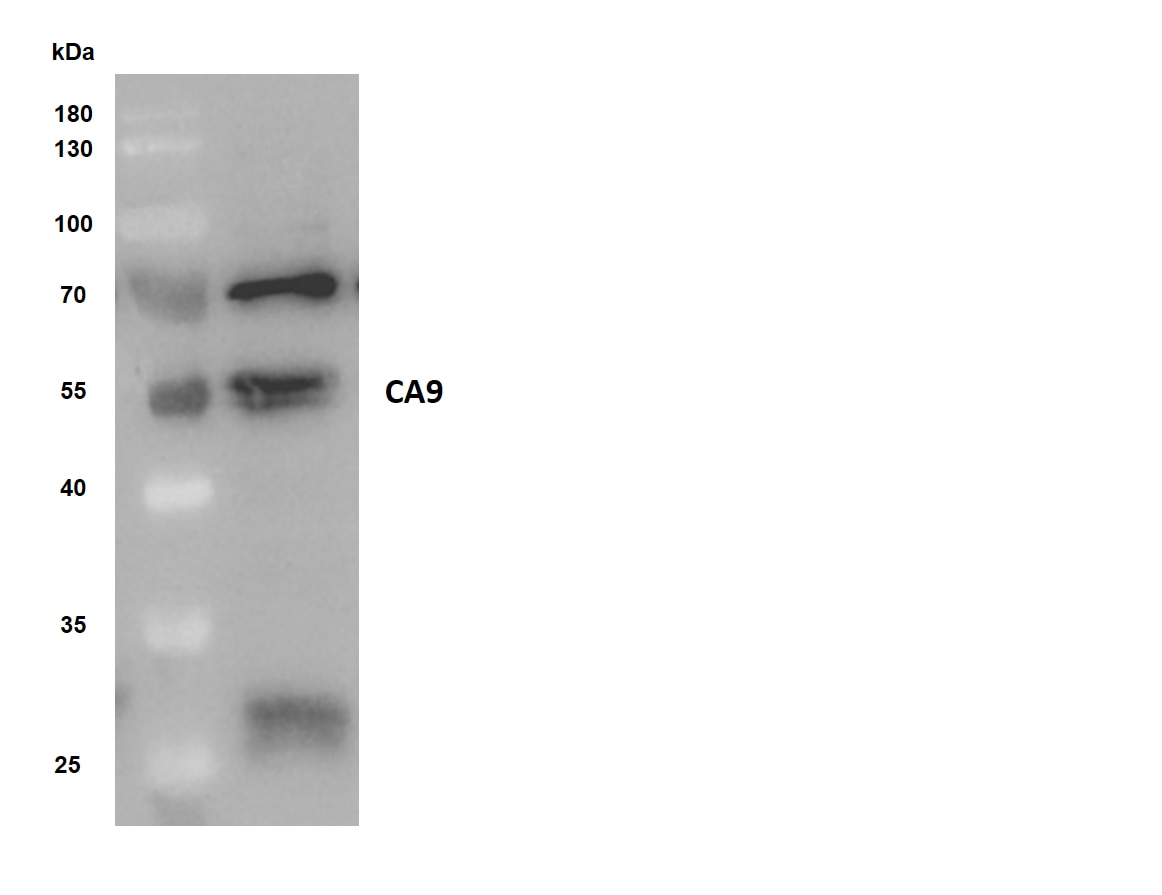 |
FH K (Verified Customer) (08-03-2021) | total cell lysate (50 ug of human HCC cell lines) was resolved on 10% Bis-Tris gel and transferred to nitrocellulose membrane. Membrane was incubated in blocking buffer (5% BSA in TBS/0.1% Tween-20) for 1h. Membrane was incubated with anti-CA9 in blocking buffer (1:500) at 40C overnight. After 1h incubation with appropriate secondary antibody (anti-Rabbit 1:5000) membranes were imaged with ECL and expected band was detected.
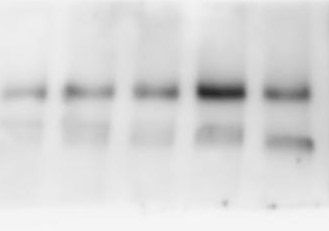 |
FH Paulo (Verified Customer) (03-04-2019) | Total cell lysate (50 ug of human ccRCC cell lines) was resolved on 10% Bis-Tris gel and transferred to PVDF membrane. Membrane was incubated in blocking buffer (5% milk in PBS/0.1% Tween-20) for 1h. Membrane was incubated with anti-CAIX in blocking buffer (1:250) at 4C overnight. After 1h incubation with appropriate secondary antibody (DAKO anti-Rabbit 1:10000) membranes were imaged with ECL and expected band was detected
|
